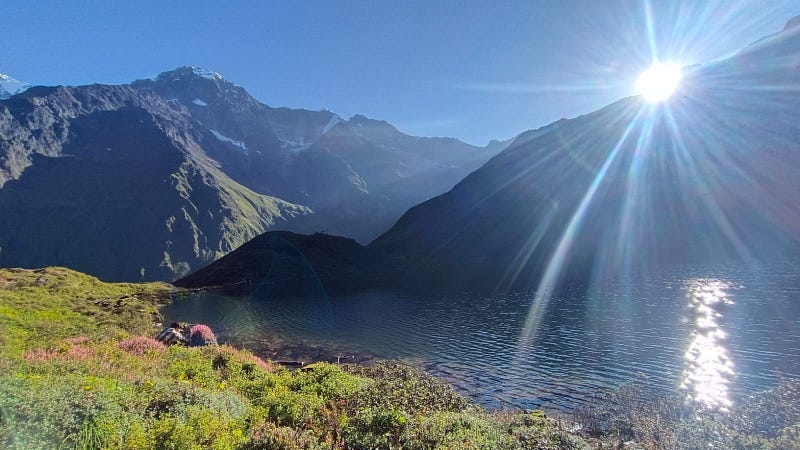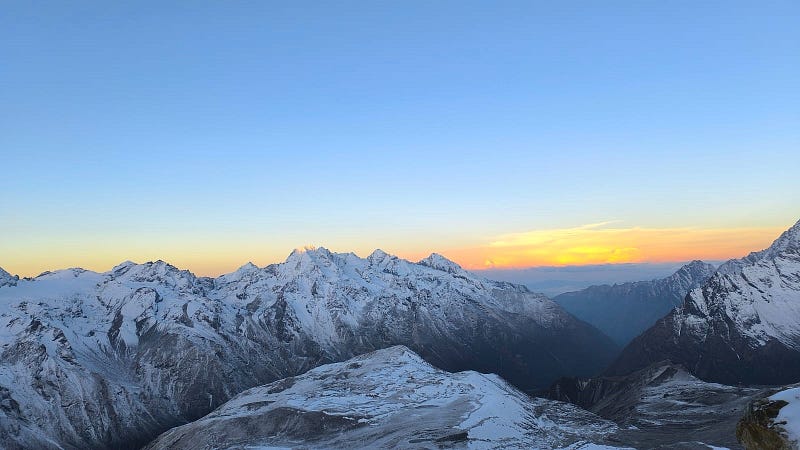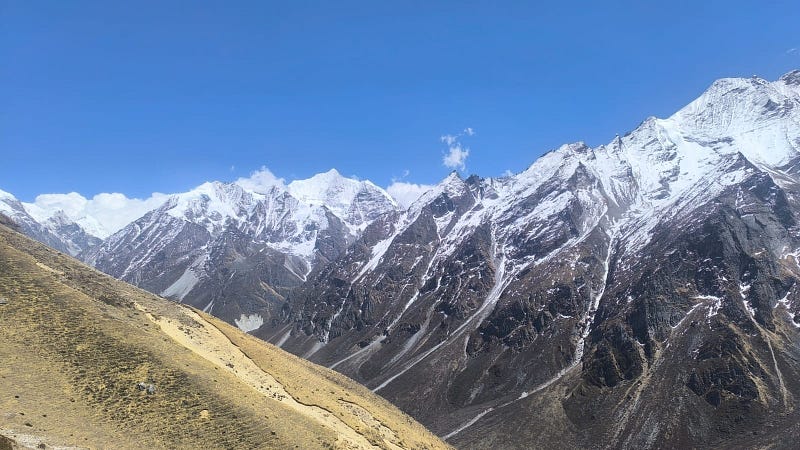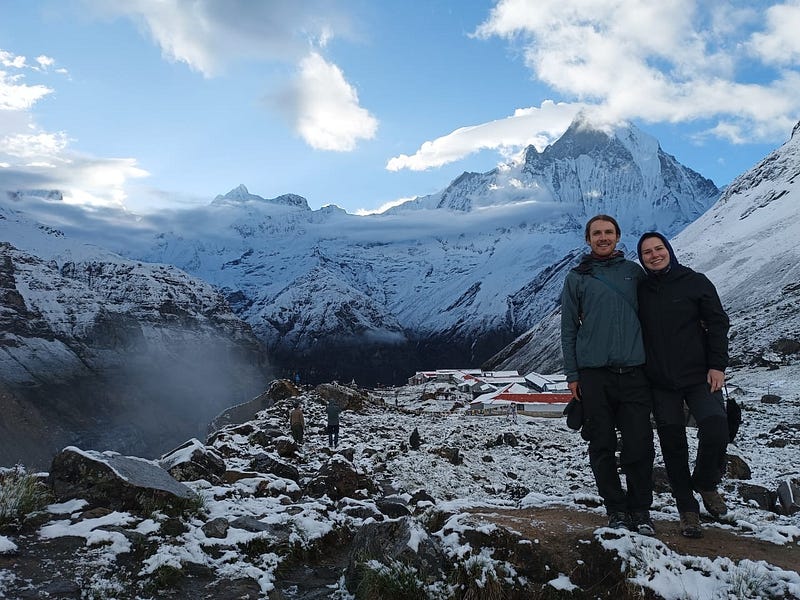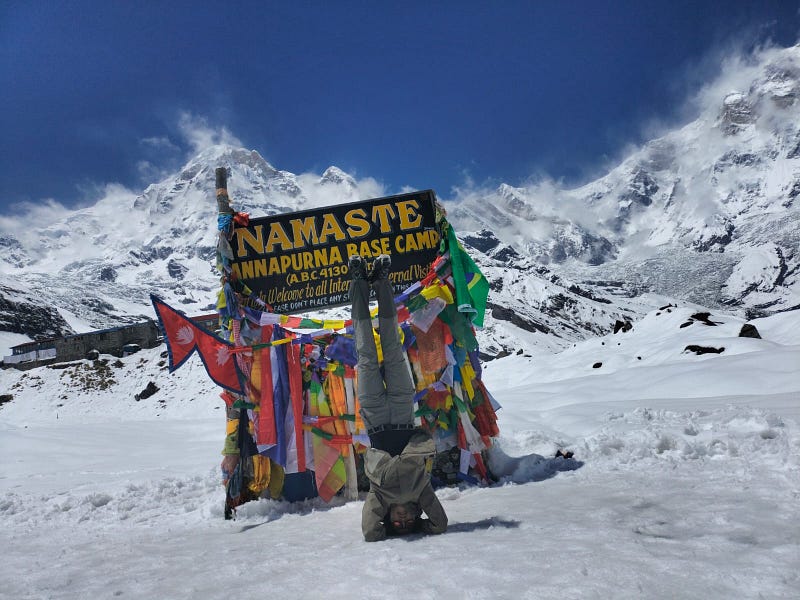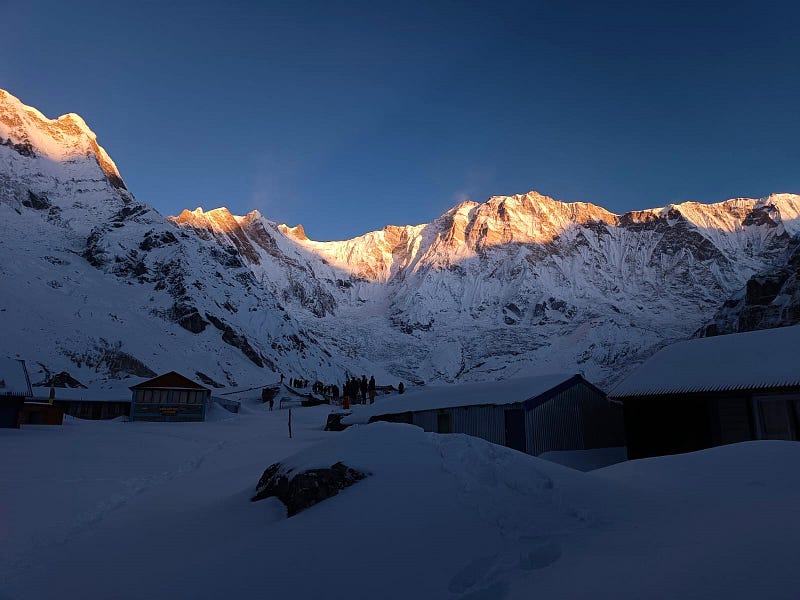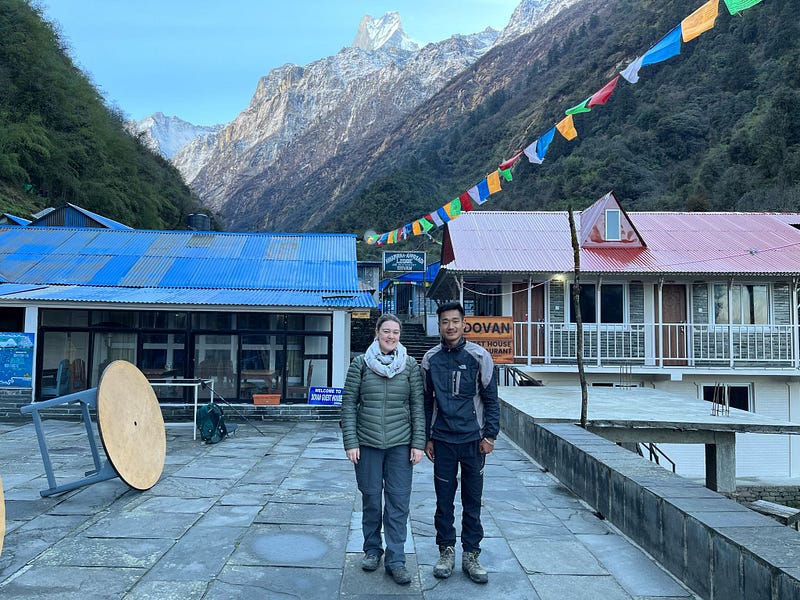Embarking on the Everest Base Camp Trek in August offers a unique blend of challenges and rewards. This time of year, nestled within the monsoon season, presents trekkers with lush, vibrant landscapes, fewer crowds, and the chance to experience the peaceful solitude of the Himalayas. While the trek might demand a bit more preparation due to weather conditions, the breathtaking scenery and cultural immersion make it a journey worth considering.
In August, the Everest region is a canvas of green, with wildflowers blooming and waterfalls cascading down the mountainsides. This period allows trekkers to witness a side of the Himalayas that is often missed during the popular trekking months. The trails, less crowded than in peak seasons, offer a more personal and introspective experience, allowing us to connect more deeply with the natural and cultural splendor surrounding us.
However, trekking during this month requires careful planning and preparation. From weather considerations to packing the right gear, understanding the nuances of an August trek is essential. This guide aims to provide comprehensive insights into what to expect and how to prepare for this extraordinary adventure.
Weather Conditions in August
The weather during the Everest Base Camp Trek in August is characterized by frequent rain showers, given it falls in the monsoon season. These rains can make trails slippery and challenging, yet they also bring the mountains to life with lush greenery and flowing streams. It’s crucial to prepare for these conditions by packing appropriate rain gear and waterproof clothing.
Temperatures at lower altitudes range from 10 to 20 degrees Celsius, making it relatively mild, though cooler temperatures can be expected as we ascend. The higher altitudes can experience temperatures close to freezing, especially at night. Thus, layering is essential to adjust to varying temperatures throughout the day and night.
Despite the precipitation, there are often windows of clear skies which reveal breathtaking views of the surrounding peaks. Early mornings are generally the clearest, offering the best chances for unobstructed vistas. By understanding and preparing for the weather conditions, we can make the most of the trek, turning potential challenges into memorable experiences.
Difficulty Level of the Trek in August
The Everest Base Camp Trek in August presents a moderate level of difficulty due to the combination of altitude, weather conditions, and trail terrain. While the paths are well-trodden, the monsoon rains can make them slippery and muddy, requiring careful navigation. Trekkers need to possess a good level of physical fitness and stamina to handle these conditions effectively.
One of the primary challenges is the altitude, with the trek reaching heights of over 5,300 meters. Acclimatization is crucial to prevent altitude sickness, and this involves a well-planned itinerary that allows for gradual ascents and rest days. Understanding the signs of altitude sickness and taking appropriate measures can greatly enhance the safety and enjoyment of the trek.
Mental preparation is equally important as physical readiness. The trek demands perseverance and adaptability, especially when confronted with the unpredictable weather. However, with the right mindset and preparation, the challenges can be overcome, rewarding us with the unparalleled beauty and serenity of the Everest region.
Accommodation Options Along the Trek
Accommodation along the Everest Base Camp Trek ranges from basic teahouses to more comfortable lodges, depending on the location and availability. In August, the teahouses are less crowded, providing us with more flexibility in choosing where to stay. These accommodations offer a unique opportunity to experience local hospitality and culture.
Teahouses typically provide simple rooms with twin beds and shared bathroom facilities. While amenities might be basic, they offer warmth and shelter from the elements. Some teahouses also provide meals, often serving traditional Nepalese dishes like dal bhat, which are both hearty and replenishing for trekkers.
For those seeking more comfort, a few lodges offer additional amenities such as hot showers and Wi-Fi access, though these come at a higher cost. It's advisable to carry cash, as electronic payments might not be possible in remote areas. By understanding the accommodation options, we can plan our trek to ensure a comfortable and culturally enriching experience.
Cost Breakdown for the Trek
The cost of the Everest Base Camp Trek in August can vary based on several factors, including accommodation choices, guided tours, and personal expenditures. On average, the trek can range from $1,200 to $2,500 USD, which typically includes permits, accommodation, meals, and guide services.
Permits: Trekkers need to obtain the Sagarmatha National Park Permit and the TIMS card, costing approximately $50 USD in total.
Accommodation: Teahouse stays can range from $5 to $20 USD per night, depending on the location and facilities offered.
Meals: Daily meal costs are around $20 to $30 USD, with prices increasing as we ascend to higher altitudes.
Guides and Porters: Hiring a guide or porter can greatly enhance the trekking experience, costing about $30 to $40 USD per day.
Additional expenses might include gear rental, travel insurance, and transportation to and from Lukla. By carefully planning and budgeting, we can ensure that our trek is both affordable and fulfilling.
Necessary Permits and How to Obtain Them
Before embarking on the Everest Base Camp Trek in August, obtaining the necessary permits is a crucial step. The two primary permits required are the Sagarmatha National Park Permit and the TIMS (Trekkers' Information Management System) card. These permits help regulate trekking activities and ensure safety within the region.
The Sagarmatha National Park Permit can be obtained in Kathmandu or Monjo, costing around $30 USD. This permit is essential as it allows access to the national park area, which encompasses the majority of the trek. The TIMS card, priced at approximately $20 USD, is available through registered trekking agencies in Kathmandu or the Nepal Tourism Board office.
It's advisable to secure these permits in advance to avoid any last-minute hassles. Having all necessary documentation, such as a valid passport and recent passport-sized photos, is essential for a smooth application process. By understanding the permit requirements, we can ensure a seamless start to our trekking adventure.
Essential Gear and Packing List
Packing the right gear is vital for a successful Everest Base Camp Trek in August. Due to the monsoon season, emphasis should be placed on waterproof and moisture-wicking materials to combat the frequent rains and varying temperatures.
Clothing:
Waterproof jacket and pants
Fleece jacket or vest
Thermal layers
Moisture-wicking t-shirts and long-sleeve shirts
Footwear:
Sturdy trekking boots with good grip
Waterproof gaiters
Gear:
Trekking poles for stability
Waterproof backpack cover
Sleeping bag rated for -10°C
Essentials:
High SPF sunscreen and lip balm
Reusable water bottle with filtration system
Basic first aid kit including altitude sickness medication
By ensuring we have the right gear, we can tackle the challenges of the trek comfortably and safely. It's also recommended to pack light, as carrying heavy loads can be strenuous at higher altitudes.
Health and Safety Tips
Health and safety are paramount when undertaking the Everest Base Camp Trek, especially in August when conditions can be unpredictable. Altitude sickness is one of the primary concerns, and it’s crucial to recognize its symptoms, which include headaches, nausea, and dizziness. Gradual acclimatization and staying hydrated can help mitigate these risks.
Maintaining good hygiene is essential to prevent illnesses. Carrying hand sanitizers and being cautious with food and water sources can help avoid common ailments like stomach bugs. It’s wise to stick to bottled or purified water and consume freshly cooked meals.
Weather-related safety is another consideration. Slippery trails due to rain require careful navigation, and having appropriate gear like trekking poles can aid in stability. Staying informed about weather forecasts and being prepared to adjust plans is vital for a safe and enjoyable trek.
Training and Physical Preparation
Preparing physically for the Everest Base Camp Trek in August is crucial to handle the trek's demands. Cardiovascular fitness is key, as the trek involves long days of walking on varied terrain. Activities like running, cycling, and swimming can help build endurance and stamina.
Strength training, focusing on the legs, core, and upper body, is equally important. Exercises such as squats, lunges, and planks can enhance muscle strength and stability, essential for navigating the challenging landscapes. Incorporating hill or stair climbing into our routine can simulate the uphill challenges of the trek.
Mental preparation should not be overlooked. The trek can be mentally demanding, and developing a positive mindset and resilience will aid in overcoming any hurdles. By dedicating time to both physical and mental preparation, we can embark on the trek with confidence and enthusiasm.
Cultural and Scenic Highlights Along the Trek
The short 10 days Everest Base Camp Trek is not only a journey through breathtaking landscapes but also an immersion into the rich cultural tapestry of the Sherpa people. August offers a unique opportunity to experience local festivals and traditions, as the monsoon season is also a time of cultural celebrations in the region.
The trek takes us through picturesque villages like Namche Bazaar and Tengboche, where we can explore ancient monasteries and learn about Buddhist practices. The vibrant prayer flags and mani stones along the trail add a spiritual dimension to the trek, enhancing the overall experience.
Scenic highlights include the stunning views of Everest and other towering peaks such as Lhotse and Ama Dablam. The lush greenery and abundant flora and fauna during August enhance the visual splendor, making each day of the trek a photographic delight. By embracing both the cultural and natural wonders, we enrich our journey and create lasting memories.
Conclusion: Is August the Right Time for Your Trek?
Deciding whether the Everest Base Camp Trek in August is right for us depends on our preferences and preparation. This month offers the opportunity to experience the Himalayas in a unique way, with lush landscapes and fewer crowds. However, it requires readiness to face the challenges of the monsoon season, including frequent rain and potentially slippery trails.
If we are prepared to embrace the unpredictability of the weather and have adequately trained for the physical demands, August can be a rewarding time to trek. The solitude, cultural interactions, and natural beauty provide a distinctive perspective on one of the world’s most iconic trails.
Whether August is our ideal time for the trek depends on our willingness to adapt and our desire for a quieter, more introspective experience. With the right mindset and preparation, the Everest Three Passes with Everest Base Camp Trek in August can be an unforgettable adventure.
Embark on Your Adventure
Ready to take on the challenge of the Everest Base Camp Trek in August? Start planning your adventure today by consulting with experienced trekking agencies and gathering your gear. Embrace the unexpected and discover the serene beauty of the Himalayas. Besides the Everest Base Camp, to explore the Challenging Three High Passes, Gokyo Lake, Island Peak and Lobuche Peak too.
Let this guide be your companion as you prepare for an adventure of a lifetime. Safe travels!



